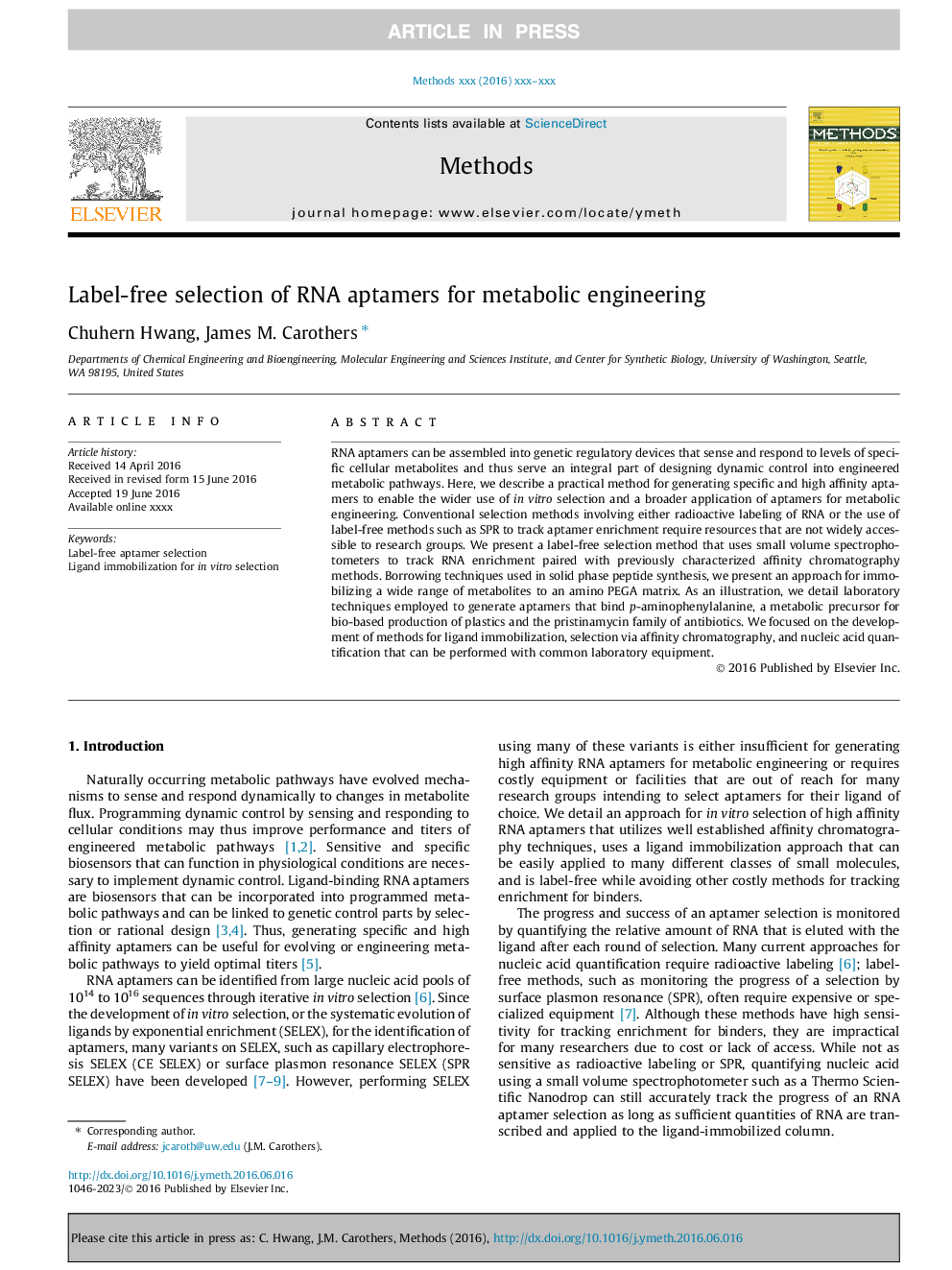| Article ID | Journal | Published Year | Pages | File Type |
|---|---|---|---|---|
| 8340214 | Methods | 2016 | 5 Pages |
Abstract
RNA aptamers can be assembled into genetic regulatory devices that sense and respond to levels of specific cellular metabolites and thus serve an integral part of designing dynamic control into engineered metabolic pathways. Here, we describe a practical method for generating specific and high affinity aptamers to enable the wider use of in vitro selection and a broader application of aptamers for metabolic engineering. Conventional selection methods involving either radioactive labeling of RNA or the use of label-free methods such as SPR to track aptamer enrichment require resources that are not widely accessible to research groups. We present a label-free selection method that uses small volume spectrophotometers to track RNA enrichment paired with previously characterized affinity chromatography methods. Borrowing techniques used in solid phase peptide synthesis, we present an approach for immobilizing a wide range of metabolites to an amino PEGA matrix. As an illustration, we detail laboratory techniques employed to generate aptamers that bind p-aminophenylalanine, a metabolic precursor for bio-based production of plastics and the pristinamycin family of antibiotics. We focused on the development of methods for ligand immobilization, selection via affinity chromatography, and nucleic acid quantification that can be performed with common laboratory equipment.
Related Topics
Life Sciences
Biochemistry, Genetics and Molecular Biology
Biochemistry
Authors
Chuhern Hwang, James M. Carothers,
